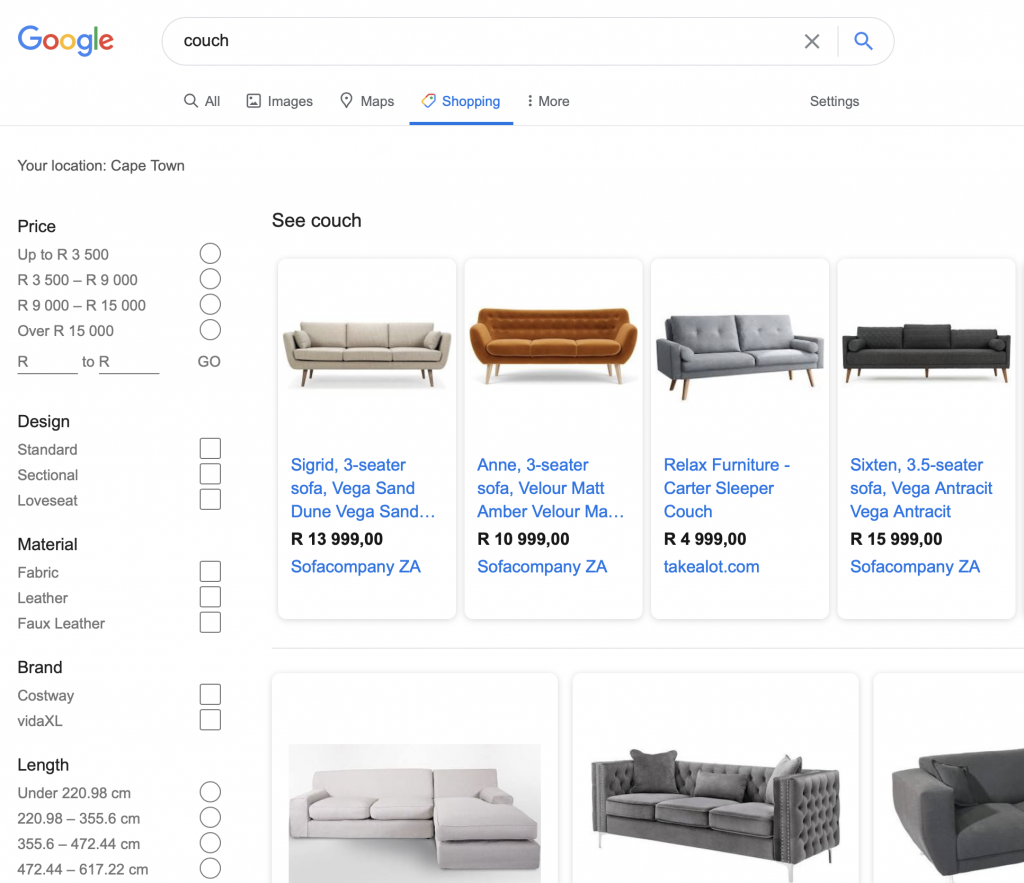
Deciding what to sell for your online store
We’ve seen eCommerce stores rise in popularity – but sometimes, the market feels oversaturated with online stores that feel a bit too similar. Finding products to sell online can be challenging for this reason.
Maybe you’re looking to sell the wrong kind of products for your online market. You could be advertising to the wrong crowd or on the wrong platform.
Perhaps you’re new to the world of ecommerce and are looking for a niche that you can get started with? Regardless of your experience with differentiating between online stores, we’ll be taking a look at some exciting ways to decide on what to sell in your online store.
Sell online: Finding your niche
The bad news is that it’s going to be incredibly difficult to become a large generalist as a small eCommerce business owner, because larger companies are attracting audiences for this purpose already – consider giants such as Takealot or Amazon.
The good news is that you’re able to enter the market through a niche or subset of the market for a specific product. You can become a specialist within your product segment, which is essential for building a strong brand presence.
When you’re crafting your ecommerce store, you’ll want to find a niche or niche product that you can sell to your audience. This will be essential in figuring out your marketing strategy and overall business function.

Ask yourself these questions when considering a product:
- Is there demand for this product? Conduct a Google AdWords search to determine frequency in your region. You can also look at sales estimators. There’s no use in selling a product that is not in demand.
- Can I easily source this product or will I need to import it? What will this cost? You don’t want to sell something that is difficult for you to keep in stock.
- Is this product easy to ship and how much inventory space does it take up? Will I need a special kind of shipping for this product? Factor in your space requirements and available facilities.
- Is this product seasonal or timeless? Seasonal products are good for when their ‘time’ comes, but might struggle for the rest of the year.
- Would selling this product be profitable for me? This is absolutely essential to consider.
- Does this product relate to other items or accessories that I can expand into in future? This is important for scalability and future growth.
- Is this product likely to be sold in large quantities? For instance, do customers typically order more than one unit in a single order?
- Can this product be personalised? What can you offer in terms of customisation?
- Is this product consumable? This might encourage repeat business.
Product Fit
You might also want to differentiate products according to what they provide for your customers.
For instance, if you’re selling a ‘candy-like’ product, it means that the product is nice to have but is not really useful and serves an aesthetic purpose. It is used for instant gratification and can be considered a pleasurable product. This kind of product eventually goes out of style, and sales will drop dramatically.
You might be selling a ‘vitamin’ type product, which means that the product has long term positive benefits and may solve an emotional need – they could be used to create a psychological need, which would ensure continual sales for your product.
The best kind of product is a ‘painkiller’ product, or a product that solves an immediate need and is always in demand. These products are often extremely pertinent to their target audience and provide instant relief. This is a great kind of product to sell online, as it will always be needed by your target audience.
The main point to learn from this is that you shouldn’t leave your product selection up to guesswork – it’s best to research potential products, industries, competitors and marketplaces to get a good idea about what you should sell. Make sure that your product is profitable before you commit to selling.

Sourcing products to sell online
There are three main options for sourcing product supply. These are dropshipping, self-made products and holding an inventory.
Dropshipping allows you to acquire products on demand from the supplier, so you don’t have to hold a large inventory and won’t incur storage costs.Shipping will form your largest cost, but you won’t have to spend too much time finalising your product.
Making your own product could be useful for specific craft or hobby items, and the major production cost will lie in material cost and labour, storage and shipping. This could make your product more expensive in the long-run, but there’s obviously a limit as to what can be made on this scale. Etsy is a good marketplace for self-made items.
Purchasing outright from a wholesaler or retailer will include storage costs, upkeep and shipping to your premises, but might be a good option for specific products if they are available at the right price.
It’s useful to think about how you’ll arrange your products along this scale, as this will impact other business functions, such as marketing, inventory, shipping and strategy.
Trending Products
You don’t need to waste time guessing for trending products when there are multiple resources to consult. SEMRush is a great tool that is used to analyze competing ecommerce stores. You can use SEMRush or similar services to see where stores are gaining the most traffic, which products are promoted by placing paid ads and what the most viewed products are.
Another platform that is great for analysis is Google Shopping. This is essentially a search engine for products, where you can search for a product and view competitor listings.
Pay attention to seasonal and market trends which could inspire you to choose popular products.
Here’s a quick idea of some trending products for 2021:
- Household storage solutions (plastic containers, baskets)
- Desk chairs and seat cushions
- Face masks
- Wearable devices
- Exercise equipment and accessories (devices, yoga mats, water bottles)
- Pet food, bowls, beds, and carriers
- Baby swings, carriers and play-mats
- Handheld devices and accessories (batteries, tripods, covers, chargers and cables, portable speakers, headphones and earphones, screen guards and selfie sticks)
- Toys for kids, (toy kitchens and play food)
- Bookcases, shelving and bookends
- Craft-related items (needlework patterns and kits)
- Cosmetics and beauty (temporary tattoos, hair-styling tools, products and accessories)
This list goes far beyond the aforementioned items! Do some research and you’ll be able to find something you’re happy to sell at scale. Reading customer reviews from competitors might lead you to recognising some pain points which you can further develop upon.
If you’re still struggling to consider an idea, you might look to sell items for a specific popular hobby, use your own personal interests and activities, or fill a gap for industry-specific products. Browsing social media can yield from new results.
Conclusion
It’s clear that there’s a lot of work involved when deciding which product you’ll base your ecommerce business on! Your product will affect multiple elements of your business, including brand and identity, marketing strategy and choosing the right ecommerce platform.
Good luck with your new niche and here’s hoping you sell lots of units online!




